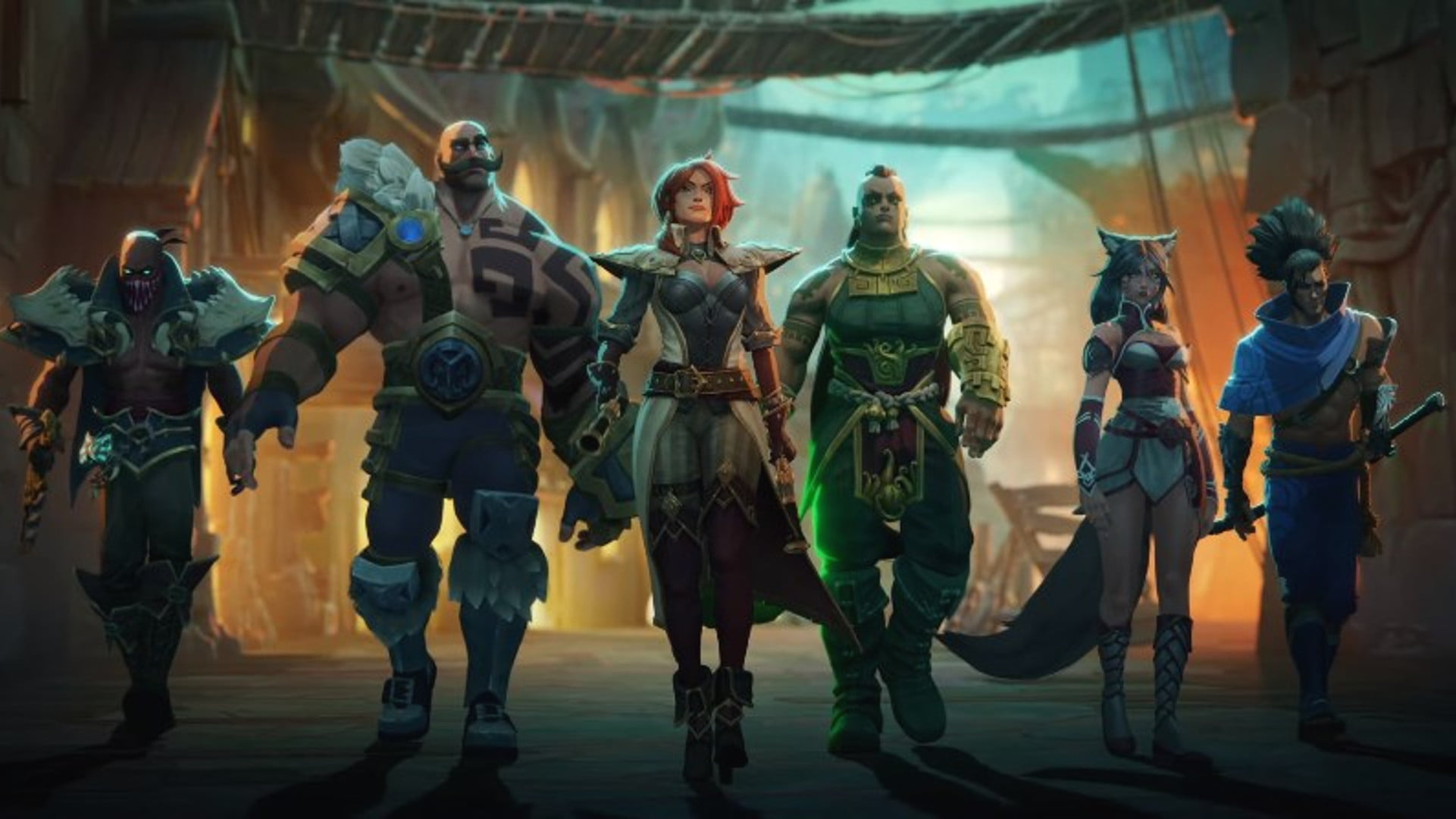The League of Legends brand has evolved immensely over its 11-year life span. What started as a simple Multiplayer Online Battle Arena (MOBA) filled with wild and strange characters has formed into a living and breathing world. In recent years, Riot Games put out multiple games, many that take place in Runeterra — the world in which League of Legends takes place.
Now that Runeterra is fully fleshed out and has multiple games encompassed in it, many players are now focusing on what the “true canon” means in this world. With the recent release of The Ruined King and Hextech Mayhem, developer Riot Forge seems hesitant to confirm whether these games are specifically canon in League’s story. This has led players to dismiss the events in this game, as they may not fit neatly into the true canon. Riot Games and Riot Forge’s stance on the canon of its games shows is that it’s not particularly concerned about an all-encompassing omni-canon, but it wants the story to be about what League of Legends really is: Legends of heroes.
To be canon or not to be canon?
Around the time that the Ruined King was released, Riot Forge held an AMA on Reddit to discuss the game. A question about how the game fits into the canon was brought up, and Rowan Parker, creative director at Riot Forge, answered. He later posted his answer to Twitter, as it was clearly a topic many fans of the series were interested in. His explanation left many unsatisfied, and some were still confused. Parker’s response simultaneously claimed that Ruined King was mostly canon, but Riot Forge isn’t fully committed to making in-canon games.
I understand why many players feel dissatisfied with that answer. A large narrative and canon is something that can be very enjoyable. We’ve seen it in game franchises like Resident Evil and even in the movies — like the Marvel Cinematic Universe. Consistent canon adds a feeling and understanding that each story beat, character, or event serves a greater purpose. It brings causality to a narrative. Instead of random events and characters acting independently and possibly in a contradictory way, everything falls into each other. Event X happens because of character Y, which will affect the lands of Z. With the large and eclectic world of League of Legends, the omni-canon acts as a Rube-Goldberg machine — strange shapes and gizmos that do not feel congruent, but all efficiently work together for a singular purpose.
The issue with an omni-canon is that it leaves very little room for “excess weight.” If a story or a character does not fit neatly into that canon or narrative, it is almost completely excised, like heretical writings from a mad monk in the mountains. This can make a game or a TV series feel myopic — only focused on one thing, leaving no room for experimentation. This is even seen in the League of Legends series with characters like Rumble and Shaco, whose stories — or lack thereof — do not fit into the grand narrative Riot Games has been building up to. While they are still playable in games, they feel out of place compared to characters with more narrative weight like Swain or Lucian.
Instead of wrangling all of these stories and characters into something cohesive, Riot Games is taking a different approach — a compromise, of sorts. The world of Runeterra does have an official timeline and is filled with characters and events that work off of each other. However, there is room for non-canonical storytelling, giving the narrative freedom to experiment. This brought us spin-off games like Hextech Mayhem and the Ruined King. While some events in Ruined King and all the events of Hextech Mayhem are non-canonical, it still focuses on a core value of the League of Legends series: Characters, or specifically, heroes.
I need a hero, or 140 heroes
Jump back 11 years ago, when League of Legends was in its infancy. Instead of concerning itself with an overarching narrative with a believable world, LoL was simply just a MOBA. The world of Runeterra was not as important as its inhabitants. To this day, League of Legends’ roster is filled with interesting and unique characters, because it’s what helped start the fandom for this game. The importance of the characters and their traits seems to be part of the ethos of these games. This is put succinctly by Rowan Parker in the Reddit AMA. “Do we think Ziggs ‘really’ blew up 1/2 of Piltover in a rampage? Probably not (much). However, is the banter between Ziggs and Heimer true to personality and expose more of their relationship? Definitely.”
Hextech Mayhem and Ruined King are meant to be explorations of the characters inside the lore of LoL. We get to see characters that we have known for years in a new light and express themselves in a new way. Like Rowan says, it’s not important whether Ziggs blew up half of Piltover. Instead, the reasons why and how Heimerdinger tries to stop Ziggs are significant, because those actions and motivations help the players understand Heimerdinger more and appreciate his character. While the major beats of Ruined King do take place on the timeline, not everything in the game has to be particularly true because the story serves as a way to see the characters express themselves.
Narratives inside the canon of a series can serve this purpose just as effectively as non-canon narratives. They might even feel more impactful, as canon narratives can all fit in together. The way that Riot Games is handling these “non-canon” games can be understood by looking at the full name of these games. Both of them have “A League of Legends Story” in their title.
These are stories found in the world of Runeterra. Stories, myths, and even legends do not need to be fully concerned with an overarching narrative or logic. Stories serve a purpose, whether it’s a moral at the end or to understand a hero and their deeds. This concept is even actualized inside the LoL canon with fan-favorite character Braum. He’s a character that’s surrounded by stories, mainly about himself and the deeds that he has accomplished. No one really questions if all those stories are true. It doesn’t matter; they accomplish their goal, which is to make people understand who Braum actually is.
An omni-canon is still a valid way to create a world or a selection of stories. Everything fitting in nicely with each other feels good and emphasizes the importance of actions and consequences. Non-canonical stories sprinkled throughout a canon can help create myths inside its own world. These stories are meant to serve a purpose and are sometimes almost as important as the canonical ones. They tell us stories about characters, ideals, and concepts that would interest us on a storytelling level. This is what allows legends to be born.


